Along the way, Knödel noticed that the museum’s Chinese collection had expanded sharply around 1900, when “suddenly”, she says, “the museum got lots and lots of really important art”.
The date is no coincidence. Between 1900 and 1901, Germany joined seven other countries – Britain, France, Austria-Hungary, Italy, Russia, the United States and Japan – in quashing the Boxer rebellion in China.
The Boxers, also known as Yihetuan, or “Righteous and Harmonious Militia” in Chinese, were an anti-foreign, anti-Christian group that emerged in response to escalating colonial aggression and missionary expansion in northern China. In the West, they gained the moniker of “boxers” for practising martial arts.
The uprising quickly escalated into an all-out war, with the Qing government in Beijing supporting the Boxers. After foreign troops arrived in Beijing, they ransacked the city, and subsequent plundering transformed the capital into an open-air art market, with priceless imperial treasures selling on seemingly every corner.
Art dealers and museum agents took advantage of the turmoil, acquiring valuable antiques and artworks at significantly reduced prices.
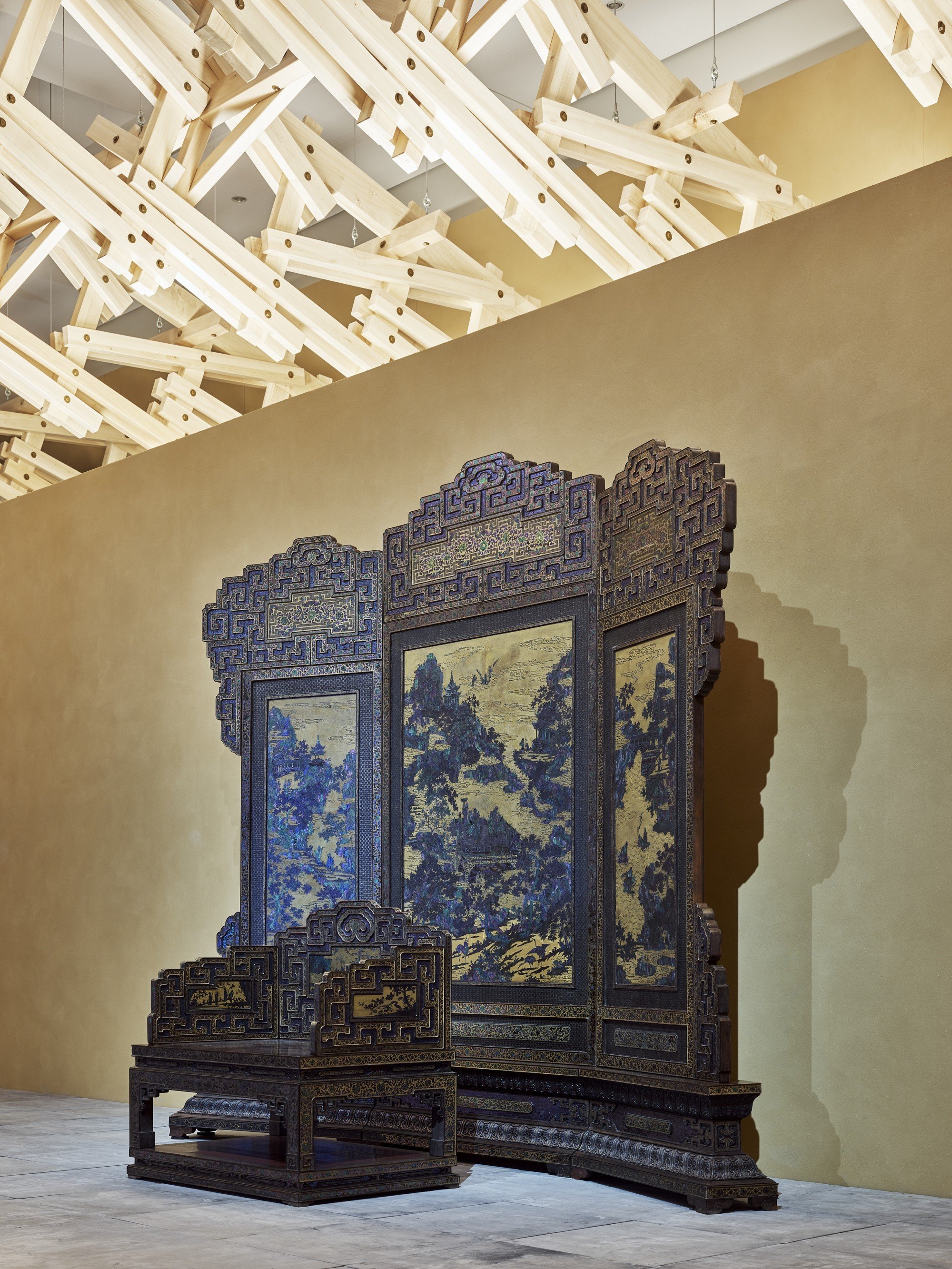
The Qianlong-period guqin in the Hamburg basement, Knödel learned from the museum’s records, had arrived in 1904, and an old catalogue card in the archive mentioned how a German soldier might have got his hands on the mismatched instrument and case in the winter of 1900-1901.
“There were seven of [the instruments],” the note read, “the others were made [into] firewood”.
Knödel was inspired to look into other, possibly dubious objects in the collection, but the museum director wasn’t too keen at the time. “Nobody’s interested in this history,” she was told, so she began compiling a list of objects of questionable provenance in secret – paintings, Buddha bronzes and imperial documents appointing individuals to official positions – and, she says, “the list just got longer and longer”.
In 2017, a change in museum leadership presented a chance to bring her lists into the open, when the new director, Barbara Plankensteiner – known for her work repatriating looted Benin Bronzes to their home in Nigeria – made Knödel’s investigation official.
Knödel then contacted Christine Howald, a Chinese art market historian and deputy director of the Central Archive at the National Museums in Berlin, who had also begun researching the provenance of its Chinese collections. Then, in 2021, fewer than three years before Knödel’s planned retirement, a project called the “Traces of the ‘Boxer War’ in German Museum Collections” was launched and financed by the German Lost Art Foundation.
Seven German museums agreed to jointly scrutinise their possibly relevant stored items: the Museum of Asian Art and the Ethnological Museum, in Berlin; Museum am Rothenbaum (Markk) and the Museum für Kunst und Gewerbe, in Hamburg; the Grassi Museum für Angewandte Kunst, in Leipzig; the Museum Angewandte Kunst, in Frankfurt; and the Museum Fünf Kontinente, in Munich.
Howald says this marks “the first systematic research of its kind”.
Germany, which only unified as a nation in 1871, had a late start to colonial expansion. By then, Europe’s “scramble for Africa” was well under way, leading to increasing conflicts among the colonising powers.
To develop a joint policy on Africa and to assert its own influence on the continent, Germany’s first chancellor, Otto von Bismarck, called on other European countries, as well as the Ottoman Empire and the US, to join the Berlin Conference between 1884 and 1885. The gathering not only intensified colonisation in Africa but also positioned Germany as an active player in the continent’s future.
After the conference, Germany swiftly rose as the third-largest colonial empire on what Europeans condescendingly called the “dark continent”, trailing only Britain and France in territory, with holdings in present-day Namibia, Tanzania, Cameroon and Rwanda. In Namibia, Germany committed what historians now call the first genocide of the 20th century, nearly wiping out the indigenous Herero and Nama people.
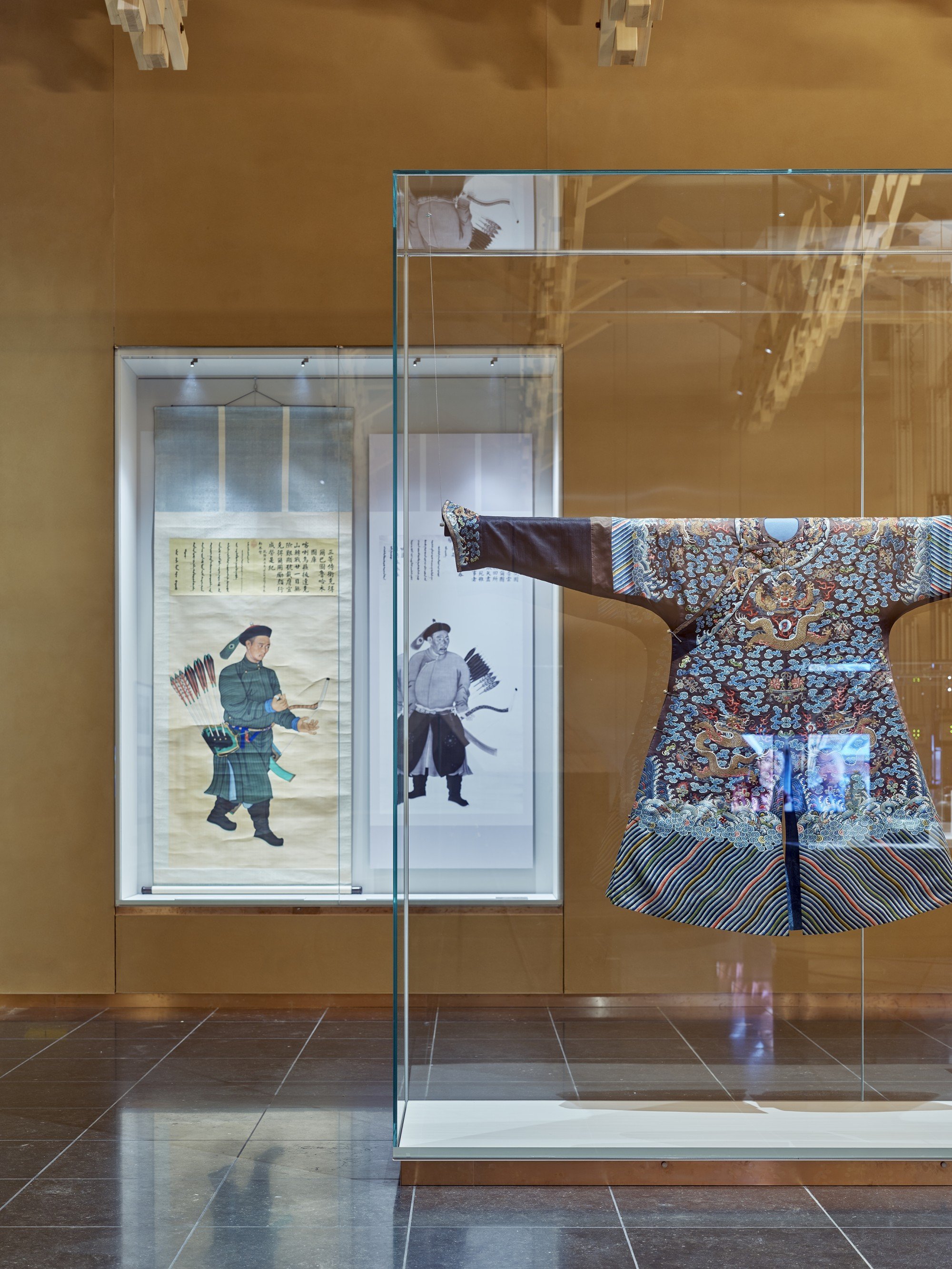
In Tanzania, at least 180,000 people died opposing German rule during the Maji Maji rebellion, after which scientists took the skulls and bones of Africans back to Europe as specimens of the now-debunked “racial sciences” meant to prove white supremacy.
The Nazis later formalised these pseudoscientific findings into a compulsory curriculum for university students, says Katrin Weber, a PhD student at Philipps-Universität Marburg. And these examples didn’t apply only to Africa. The university’s colonial human-remains collection includes two skulls labelled as Chinese Boxers.
As early as 1897, across the globe in northern China, Germany’s Kaiser Wilhelm II used the murder of two Christian missionaries in Shandong as a pretext to seize Qingdao, where he aimed to establish a “model colony” to rival British Hong Kong, and strong-handed China to lease the region for 99 years (the same number of years for which Britain extended its rule over Hong Kong a few months later).
This land grab heightened tensions with the Boxers, mostly Shandong peasants already rattled by natural disasters and aggressive missionary activities. Xiang Lanxin, historian and author of The Origins of the Boxer War (2003), says that “Germany played probably the most important role in sparking the Boxer war”.
The Empress Dowager Cixi, although initially wary of the Boxers, eventually sided with them and declared war on the Allied nations in June 1900. German diplomat Clemens von Ketteler, known for his harsh treatment of the Chinese, including shooting a Boxer dead in the streets, was himself killed in Beijing. His death gave Wilhelm II leverage to send 20,000 troops to join the international forces, declaring, “No mercy will be given! Prisoners will not be taken!”
By the time German troops arrived in the Chinese capital from Europe, the Boxers had been bested, Cixi had fled west to Xian and many members of the royal family who were too old or frail to make the journey threw themselves into wells. The eight allied nations subsequently divided and occupied Beijing for another year, and continued punishing those suspected of being Boxers. Germany was the most zealous of them all, conducting punitive expeditions outside the capital and across northern China, raiding temples and burning down villages.
The aftermath significantly weakened the Qing dynasty, which had been ruled by the Manchu ethnic group since 1644. “The Boxer war was a fatal blow to the Manchu court,” says Xiang, both to “its reputation and its political legitimacy”.
Like its colonies in Africa, Germany’s grip in China did not last long. A mere decade after China lost the Boxer war, in 1911, the Qing empire was overthrown by republican revolutionaries, ending more than 2,000 years of imperial rule. By 1914, World War I was under way, and Germany had lost its hold in Qingdao to an invading Japan.
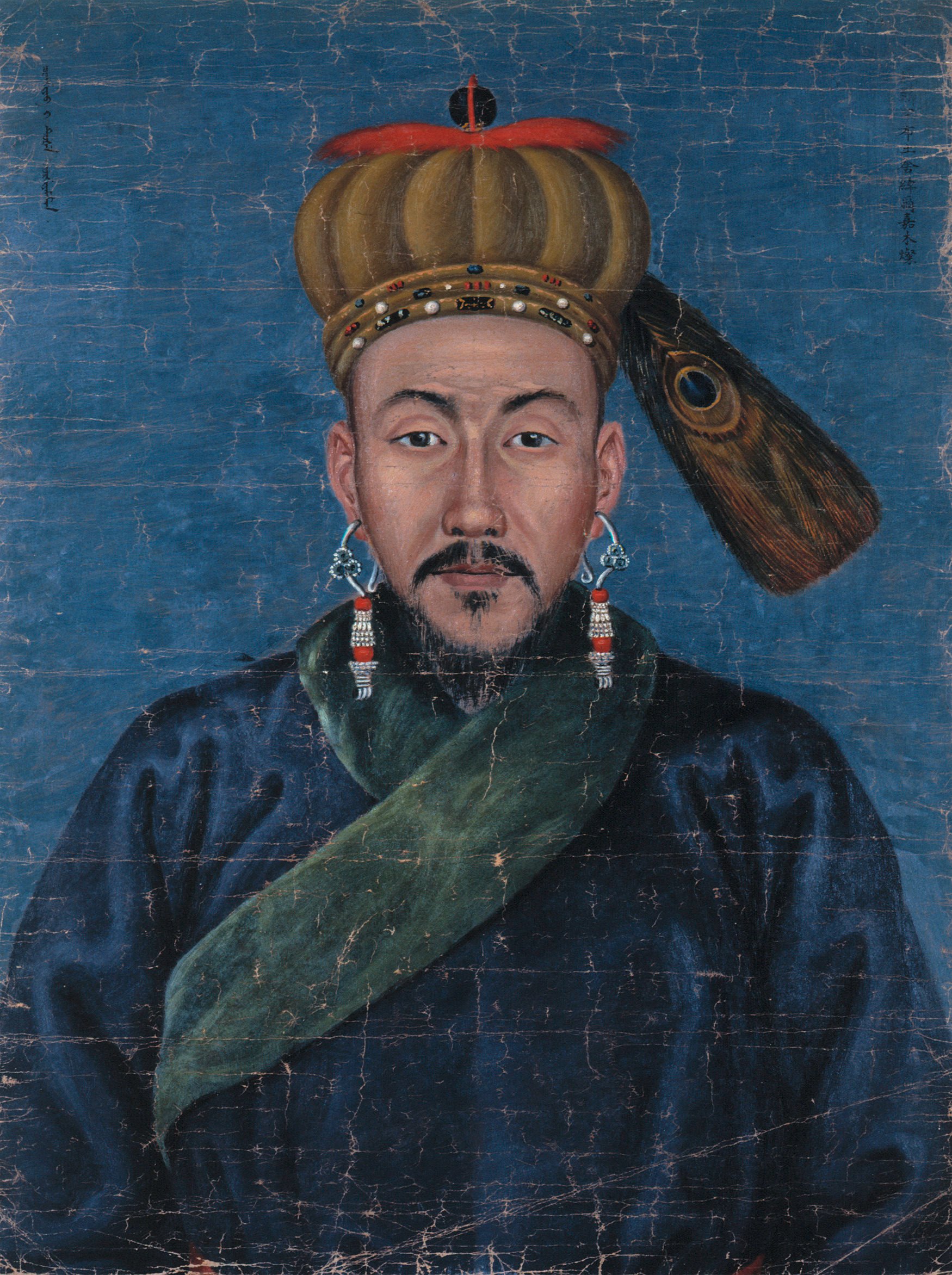
Following the German defeat back in Europe, the Treaty of Versailles, signed in 1919, gave away all German overseas territories, even granting its hold over Shandong to Japan – the Japanese being no more loved in China than the Europeans. This sparked student protests in China known as the May Fourth Movement, a significant cultural and political conversion that inspired a new generation of Chinese leaders, including Mao Zedong.
These days, Germany has been recognised for confronting its World War II-era Nazism, but its earlier forays into Africa, let alone those in China, have been comparatively overlooked. Efforts over the past couple of decades by activists and scholars, particularly from Germany’s black community, have gradually shifted public attitudes, campaigning for cities to rename streets and for educators to include colonial history in school syllabuses.
“I always had this idea from school, stupidly, that we introduced infrastructure and rebuilt hospitals,” says Knödel at the Markk museum, which has hosted exhibitions on Cameroonian anti-colonial resistance, as well as the looted Benin bronzes of Nigeria.
As such, German museums have also emerged as spaces to contest memories of pre-Nazi Germany. One catalyst for the debate was the 2021 opening of the long-awaited Humboldt Forum, a controversial museum project featuring the collections of the Ethnological Museum and the Museum of Asian Art in the historical and cultural heart of Berlin.
Two decades and €680 million (US$741 million) in the making, the Forum was supposed to put Berlin on a par with London and Paris, but the decision to house tens of thousands of objects of dubious provenance in a rebuilt palace of Wilhelm II, at the end of the Unter den Linden promenade, and across from the massive Berliner Dom, prompted activists to set up outside the museum. The high-profile provenance expert, Bénédicte Savoy, also resigned from the Forum’s prestigious board, criticising the institution’s lack of transparency.
In the past two years, the Ethnological Museum has agreed to return some of its artefacts, many from Africa, including some of the notorious Benin Bronzes, along with jewellery and tools from Namibia, as well as a statue of a Nso queen from Cameroon.
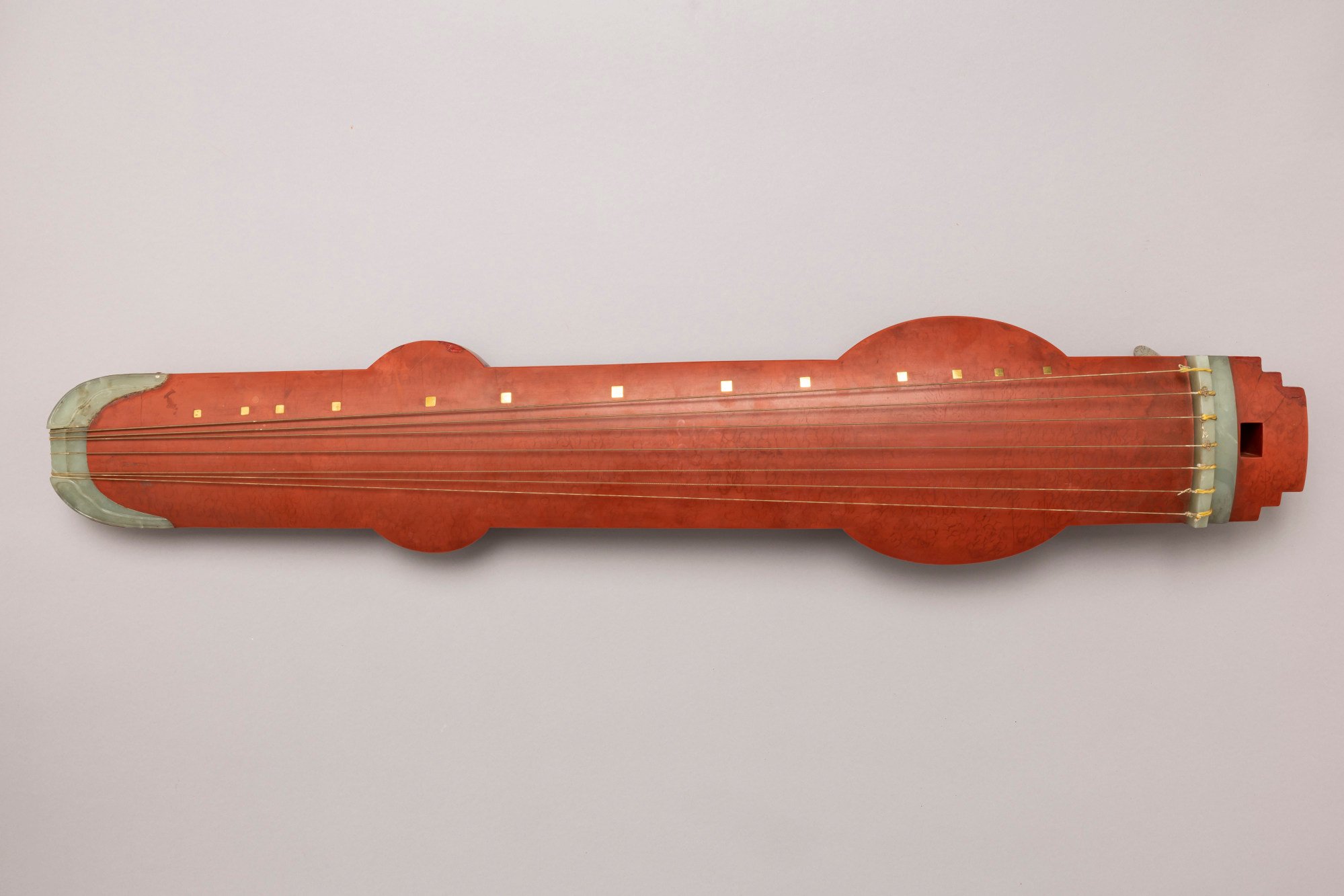
But Howald, at the helm of the Boxer war loot project, points out that Germany’s China spoils had been missing from the conversation. “The focus [of the museum debate] has in its first years mainly been on African objects, which is important,” she says, “but the colonial context of China was also a very brutal one”.
The Museum of Asian Art’s former location – home to 15,000 objects from East Asia – in Berlin’s Dahlem district, sits on Taku Street, named after the Tianjin fort bombarded by Allied warships during the Boxer war. Part of the collection is now housed at the Humboldt Forum, but as Kerstin Pannhorst, project researcher for “Traces of the ‘Boxer War’”, says, “It’s quite ironic to be doing this work here.”
She still works from the Taku Street location, and says, “It’s the responsibility of museums [to research their objects]. If they’re in our cellars, storage rooms and boxes, [we need to] ask ourselves, ‘How did they get here? Is it OK that they’re here? And if not, what do we do?’”
In 1901, Berlin’s Ethnological Museum, fearing Beijing’s treasures would soon fill museums in London and Paris, dispatched assistant director Friedrich Wilhelm Karl Müller to Beijing. He was given a meagre budget of 10,000 marks, roughly US$80,000 today, and he returned, according to Niklas Leverenz, a lawyer and scholar on German looting in Beijing at the time, with 117 crates of artefacts.
Some items in Müller’s acquisitions cost more than his entire budget, and he had also received donations from soldiers on the ground, believing in his mission. In 1902, an expert at the Ethnological Museum appraised four bronze cauldrons he brought back at 25,000 marks.
“When purchasing objects,” wrote Müller in a report upon his return, “I put my focus on primarily buying objects that could not be acquired under normal circumstances, or only with great difficulty.”
According to Leverenz, based on accounts of German soldiers in Beijing, Müller had secreted two paintings from Ziguangge, the Hall of Purple Splendor, west of the Forbidden City. The Qianlong Emperor had covered the hall’s walls with portraits of victorious generals and epic battle scenes, celebrating territorial conquests in Xinjiang, Gansu, Nepal and Taiwan during his reign.
Today, the pavilion is part of Zhongnanhai, the headquarters of the Chinese Communist Party leadership and the Chinese central government, but during the Boxer war, Ziguangge and its surrounding areas were German military headquarters. By the time Müller got there, the compound had been plundered, the walls on the second floor had collapsed, and the famed paintings, as Müller noted to the Ethnological Museum back in Berlin, “had been scattered to the wind”.
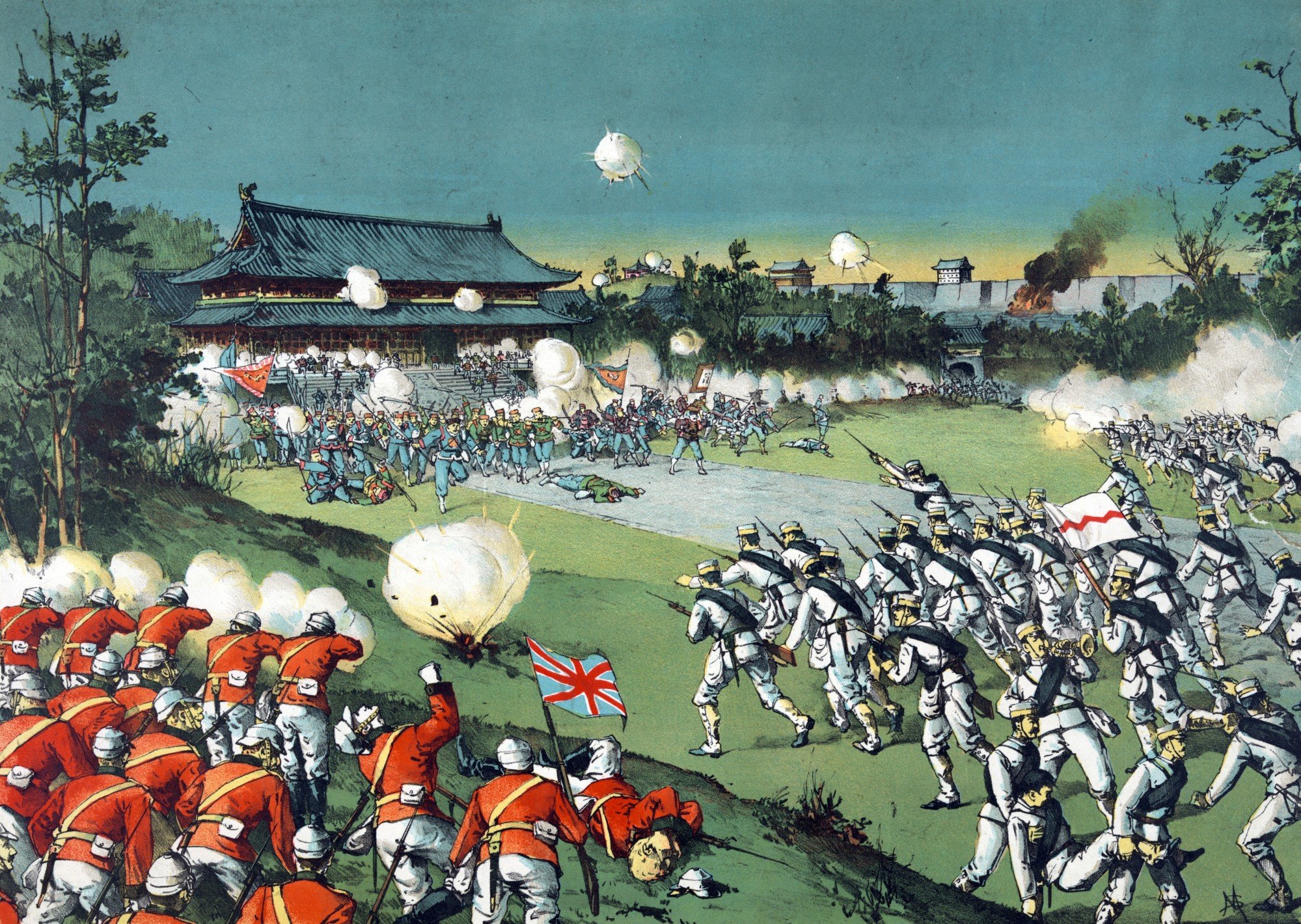
While other countries had occupied Ziguangge before the Germans did, Leverenz found that most surviving Ziguangge paintings are in German museums today, and those that surfaced on the art market could typically be traced back to German hands. The extent of looted objects in private German homes, passed down through generations, has also been a blind spot in German public consciousness, says Nicola Kuhn, a journalist at Berlin newspaper Tagesspiegel. She herself inherited a dressing screen crafted from a dark-blue Chinese material that features a five-clawed golden dragon, now displayed in her living room.
The family tale goes that the Chinese emperor had gifted the screen to her great-grandfather, a successful Hamburg businessman with trade branches worldwide including in Qingdao and Hong Kong. “We found [the screen] quite exotic and interesting,” she says, well aware of how laughable the story sounds today. The business run by her great-grandfather, she discovered recently, had supplied German troops in the Boxer war and in Namibia. Her coming book, The Chinese Screen, examines the origins of her family heirloom and 10 other artefacts from the colonial era, all held in German private collections.
As for her great-grandfather’s colonial business, Kuhn says that clearly “he was a war profiteer”.
In March 2023, the Boxer war loot project and its German provenance researchers hosted a conference at the Humboldt Forum. The room was packed with 150 attendees, mostly from German, Austrian and Swiss museums, but also legal experts and citizens who either knew or suspected their ancestors had participated in suppressing the Boxer rebellion.
Researchers shared a wide range of suspected loot from their museum collections. Mio Wakita, a curator from Vienna, discussed two Jesuit-period globes in her museum’s possession. Ricarda Brosch, a German curator working at the Victoria and Albert Museum in London, highlighted the looting of imperial tombs outside Beijing.
Birgitta Augustin, from the Museum of Asian Art in Berlin, shared how the 18-year-old Chinese Prince Chun II, father of the future “last emperor of China”, Puyi, was sent to Berlin on an apology tour after China lost the Boxer war. The prince refused to kowtow to the German Kaiser during an audience, but did bring gifts, which were later given to the Berlin museums, thus, the curator asked, “Should these gifts also be considered loot?”
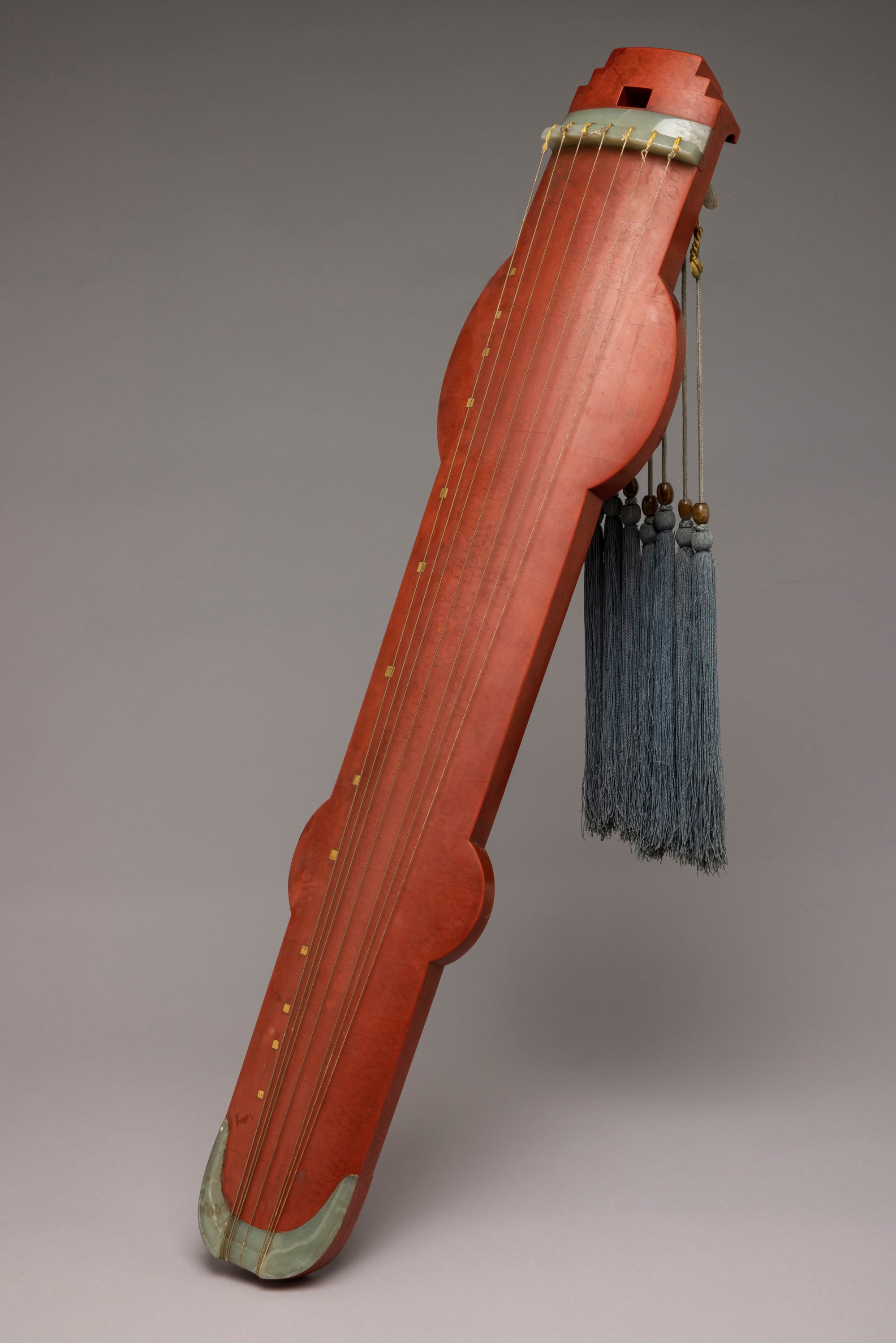
Despite the presentations focusing on identifying stolen items, the audience frequently shifted the discussion to the question of restitution. The German researchers shared that they have not received any restitution requests from the Chinese government, despite China’s reputation for claiming lost treasures overseas. And while the German provenance project had established a partnership with the Palace Museum in Beijing, the latter sent no representatives to the conference and the two Chinese embassy representatives present gave no comments, leaving many in the audience scratching their heads.
“It’s a bit funny that the Germans are doing all this without China asking for it,” says Leverenz, which raises the question, does China even want any of this stuff back?
In the past two decades, several high-profile returned items to China have captured international headlines, the most prominent being the 12 bronze animal heads of the Chinese zodiac taken from the Summer Palace by British and French troops during the second opium war, in 1860.
Chinese antiquities often attract exorbitant bids at international auctions, such as a porcelain vase found in a French estate, originally valued at under US$2,000, that fetched a whopping US$7.6 million in 2022 after attracting significant interest from Chinese buyers. All this contributes to the perception that the Chinese government and its citizens are ready to reclaim these objects at all costs, but as some Chinese experts explain, China’s weight in this area is limited, given a lack of international legal framework for restitution claims.
While international efforts such as the Unesco 1970 Convention and 1995 Unidroit Convention focus on the recovery of recently trafficked cultural properties, they are non-binding and cannot be applied retrospectively. In countries currently processing these objects, statutes of limitations often bar claims related to colonial-era thefts, and in Germany, for example, a 30-year statute of limitations prevents claims on artefacts stolen from its colonies more than 100 years ago.
“Although China’s position has always been that these cultural relics belong to China, and we say we reserve the right to reclaim them, in reality, it’s usually impossible,” says Huo Zhengxin, a law professor at the China University of Political Science and Law (CUPL) in Beijing, who specialises in the recovery of cultural relics. This challenge has led the Chinese government to focus more on recovering objects illegally exported in recent years.
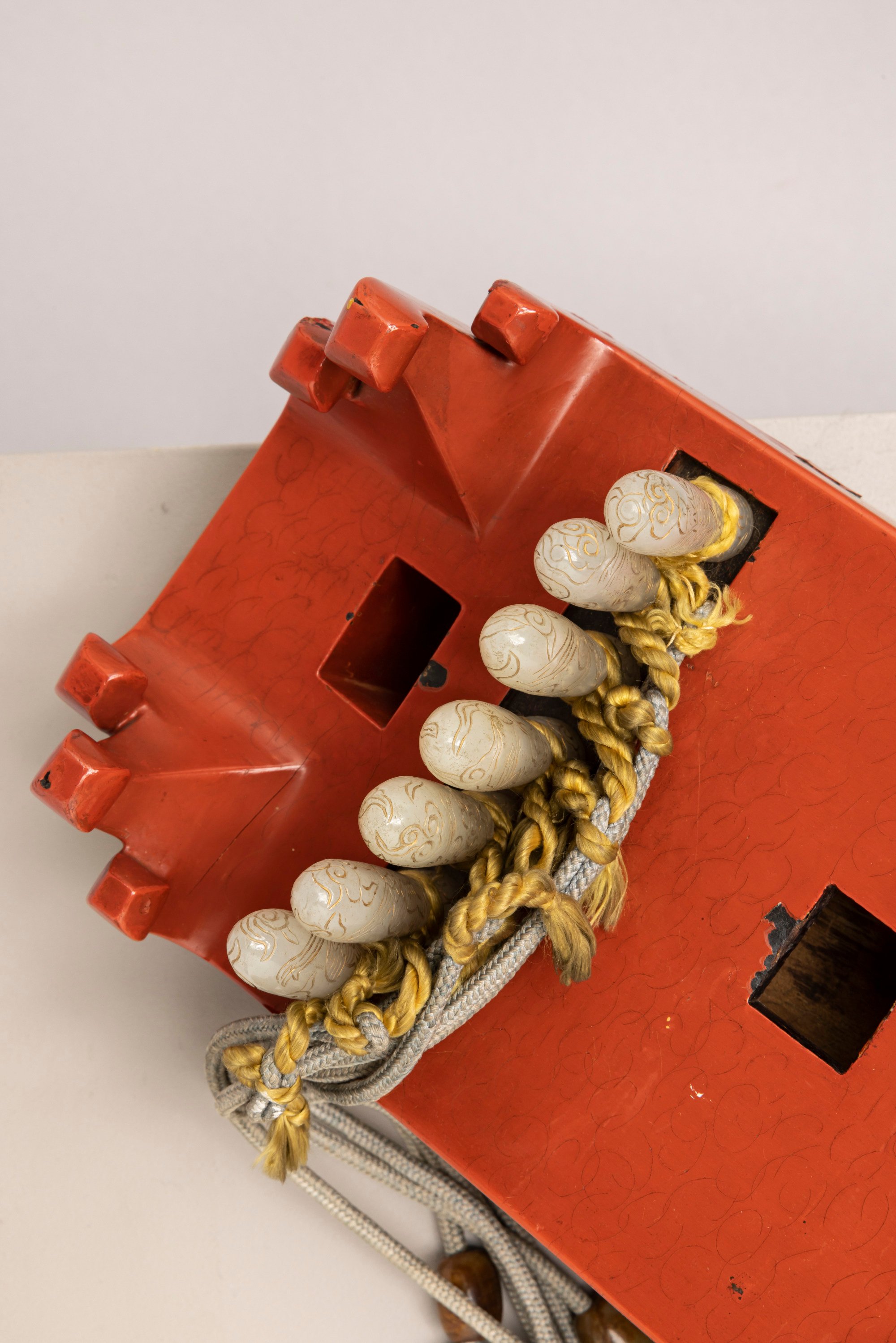
In the early 2000s, the Chinese government had encouraged wealthy Chinese to purchase artefacts at international auctions and then donate them to public institutions, and in the case of the 12 animal bronze heads, had used a combination of high bidding and high pressure on the auction houses that sold them. But Huo says that today the government no longer recommends buying as a restitution strategy, the reason being that such an approach often led to bidding wars among Chinese collectors and even Chinese governmental institutions, which only benefited the foreign art market. And in that scenario, Huo asks, “What’s the point of returning them?”
Due to Germany’s less-active art market compared with, say, those of France, Britain or the US, China “hasn’t paid Germany too much attention”, says Ruida Chen, a PhD student in restitution law from CUPL, currently studying at the Max Planck Institute for Comparative and International Private Law in Hamburg.
Sino-German exchanges on restitution have always been minimal, with the only known case being East Germany returning some Boxer-era loot to China in the 1950s. To date, China has bilateral agreements with 26 countries to tackle the illegal trafficking of cultural properties, and Germany is not one of them.
With European museums now under mounting pressure to face their historical procurement methods, provenance research has emerged as a fundamental step in understanding objects’ acquisition history and making restitution decisions. Traditionally, the burden of this task has largely fallen on countries seeking restitution, as they must substantiate ownership claims and prove their illegal transfer. Often, they lack resources for such research, which involves digging through archives, examining purchase records, and reading the diary lines of those who partook in the looting. But these, not to mention the objects themselves, are mostly in the West.
“All of this stuff is in Germany,” says Yu Filipiak, a provenance researcher and curator. “How does China do provenance research?”
Originally from China, Filipiak moved to Germany as a college student 20 years ago, and has since worked on Chinese collections at several German museums, both as curator and provenance researcher. She is currently collaborating with several Swiss museums to research artefacts from the Boxer era, and as one of the few researchers of Chinese descent doing this work in the German-speaking region, she says she tries to stay objective and looks “at [the Chinese collections] through a researcher’s lens, and will try my best to find out about the origins and present their history”.
That’s when I understood that no matter if you’re a museum guard or a handworker, everyone can feel this [sentiment] of regained knowledge and recovered treasure
Susanne Knödel, Markk Museum am Rothenbaum, Hamburg
Sometimes, studying looted art from China can be emotionally taxing. Filipiak says that many valuable Chinese artworks have never been displayed in Germany since their acquisition, and some museums seem to be unaware of their significance. Once, she went into the storage area of a Dresden state museum, where staff showed her five Ziguangge paintings.
Observing the famed artworks up close, she was struck by their artistic blend of Eastern and Western styles and intricate details. “The expressions in someone’s eyes, a mole on their face …” she says, pausing to fight back tears. “I really tried to hold it in when I was there, but my whole body was trembling.” Rather than letting these artworks sit in storage collecting dust in Germany, she asks, “Why don’t they give them back”?
Clear-cut cases such as the Ziguangge paintings, which both German and Chinese experts acknowledge as loot, are rare. More lie in grey areas, such as the objects acquired by Müller that typically wouldn’t have been sold during peacetime, and even when he had records of buying them, the methods raise moral and ethical questions today.
Howald says that after the royal family fled and social order collapsed, “The plundering also involved members of the Boxer movement and Chinese people living in Beijing who took advantage of that situation.”
The art market post-1911 was filled with treasures sold by the palace. After the monarchy was toppled, Emperor Puyi, who was just five years old at the time, was allowed to remain in the Forbidden City with an entourage of eunuchs and servants. A clandestine trade in imperial treasures thrived behind his back, with eunuchs and nobles secretly smuggling them out to collectors. Later as the monarchy’s wealth dwindled, even Puyi himself resorted to bartering precious artefacts to keep up his household.
“You will not be able to trace every object to its place of origin at the time of the looting,” says Howald. Researchers need to categorise which artefacts were clearly looted, which were likely looted and which were bought legally within the context of the Boxer war, the last requiring more research.
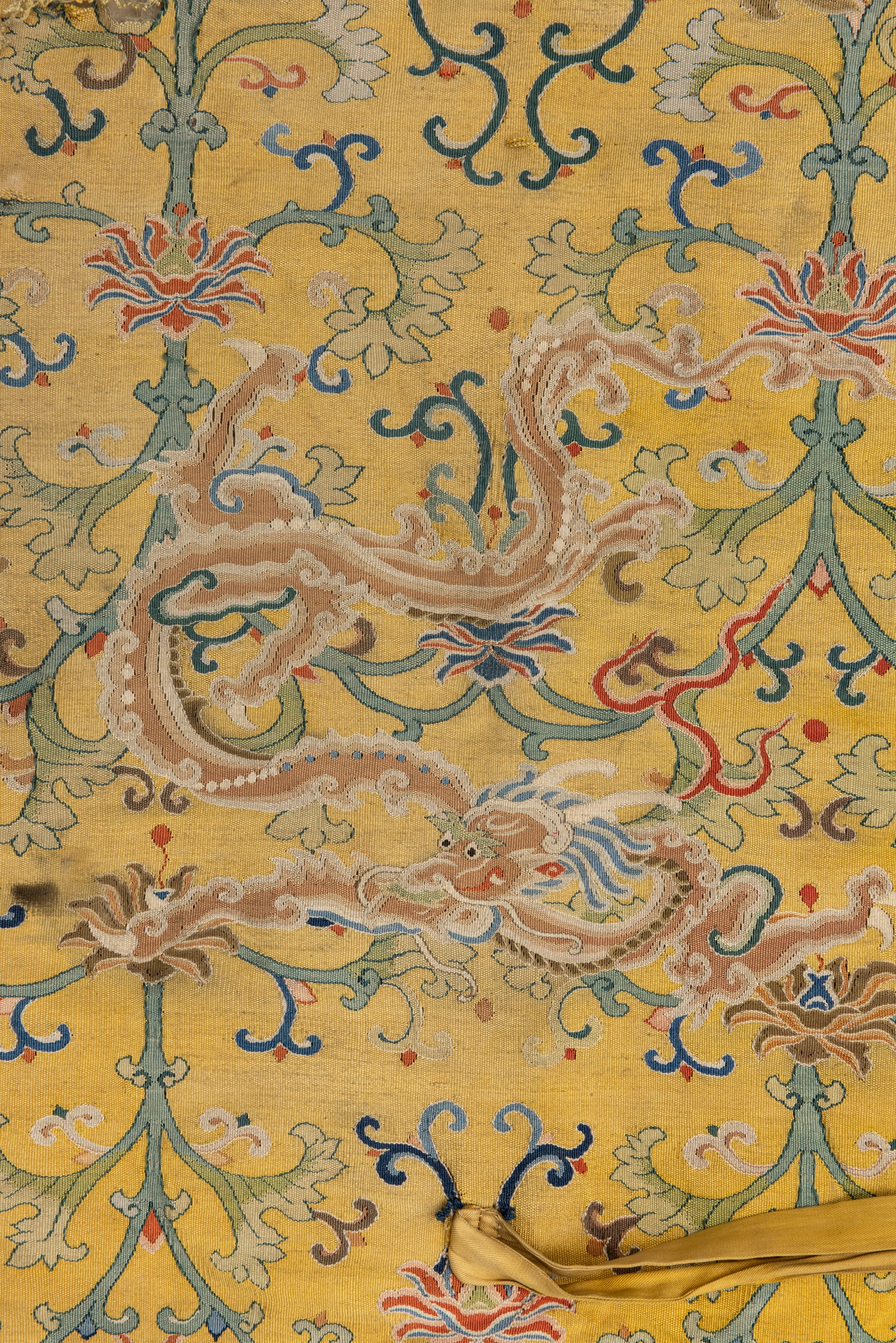
To address these complexities, the German Museum Association has issued guidelines, suggesting all objects acquired in a colonial context marked by unequal dynamics can be considered for restitution if requested. The guidelines also stress the importance of collaborating with countries of origin, not only to understand the collections better but also to rectify historical power imbalances. “It’s about finding a way to establish a new power relation,” says Howald.
When Knödel at the Markk museum reached out to colleagues at the Palace Museum about the guqin last year, she received a friendly response from a curator named Liu Guoliang, an expert on historical guqin, and Liu confirmed Knödel’s suspicion: the case in question was ordered by the Qianlong Emperor for a Tang dynasty guqin, which he believed had been lost, “but we never realised that the case still exists somewhere in the world”, he wrote to Knödel.
Now that she was in contact with an expert, Knödel remembered there was another guqin in the museum’s storage, one she had never personally seen. Museum records noted that it was wrapped with a yellow cloth, an imperial colour, so she asked the museum staff to locate and unpack it.
Upon being presented with the instrument, Knödel was astonished: the yellow cloth was decorated with exquisite Kherson embroidery, and the guqin wrapped in it had an unusually vibrant red finish, which stood out from the typically black ones.
“I don’t know anything about guqins,” she says, “but even so, it was immediately clear that this one was special”.
Knödel sent pictures of the instrument and the inscriptions to Liu, to which she got an excited reply the next day. “I know this instrument,” Liu wrote, “I have written an article about it. I didn’t know it still exists.”
It turns out it was commissioned by the Qianlong Emperor himself, who, in his youth, loved his time at the Butong Library, shaded by towering Chinese parasol trees called wutong. He spent countless hours composing poetry and playing musical instruments there. One year, a wutong tree died after being struck by lightning and he had four guqins made from its dried wood, giving each of them a unique name and a poem written on its back.
Knödel took the instrument to an all-staff museum meeting and shared how Liu, without ever seeing the guqin, had helped her uncover its remarkable story. They had no idea such a storied piece had been hidden beneath their feet for decades, its forgotten history brought to life again by someone across the globe who recognised its true value.
“That’s when I understood that no matter if you’re a museum guard or a handworker, everyone can feel this [sentiment] of regained knowledge and recovered treasure,” she says with a warm smile.
In February, researchers from the Palace Museum travelled to Munich to attend the project’s second conference, at the Museum Fünf Kontinente.
While presenting his research, Liu suggested that there may be additional imperial guqins from the period housed in German museums. The Chinese researchers referred to the historical period as the “Invasion of Eight-Nation Alliance” instead of the Boxer war, saying that the term “Boxer loot” used in the project’s terminology might inaccurately imply that it was the Boxers rather than foreigners who looted.
The researchers also expressed interest in more collaborations with German and international museums, hoping that an online database could be established in the future to enable more museums and private individuals to assist them in locating potential loot for research.
Knödel will retire at the project’s end, in a few months, and when I meet her in her office at the back of the Hamburg museum, a space stacked with books, index cards and exhibition posters, she is deciding what she will take home with her.
“Very soon, other people will take over my work, and I feel very confident that they will do well,” she says. “These stories need to be told to put ourselves in the right place, not better or worse than anybody else, and to acknowledge our human condition, and that is a good and healthy thing.”
Reporting for this story was made possible thanks to a grant from the International Women’s Media Foundation’s Kim Wall Memorial Fund.
